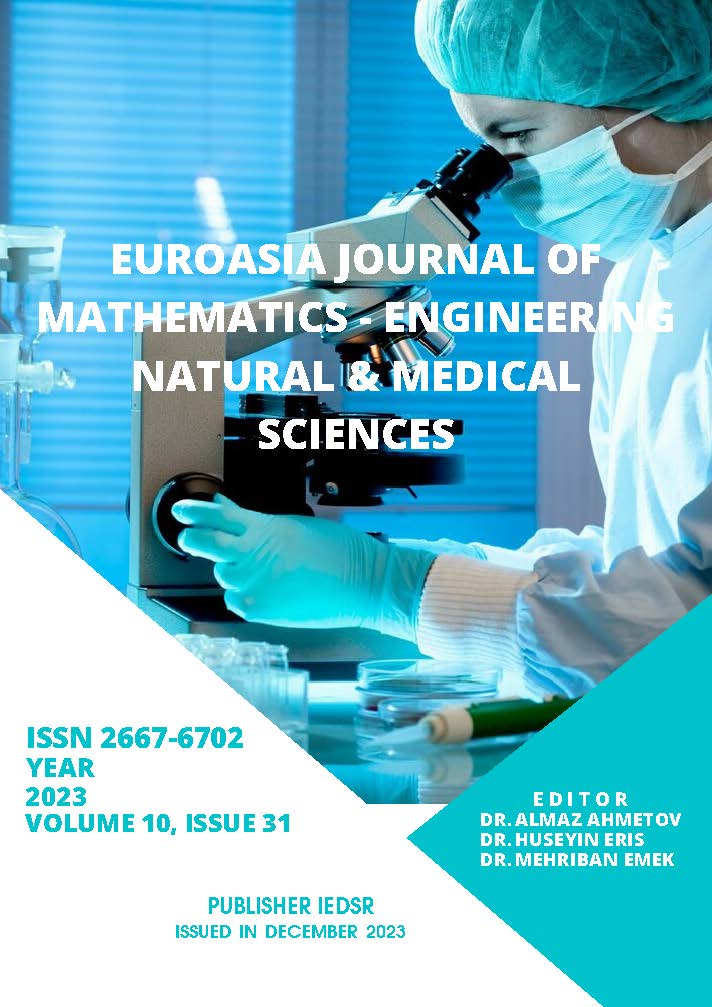Improvement of Fuel Properties of Corn Stalk by Torrefaction
DOI:
https://doi.org/10.5281/zenodo.10445883Keywords:
Biomass, agricultural waste, torrefaction, solid fuelAbstract
Agricultural residues are one of the important biomass sources. Its high moisture content, low calorific value, large volume and low bulk density make it difficult to use biomass directly as fuel. In this study, it was aimed to improve the solid fuel properties of agricultural wastes, which have a significant potential and a certain shape in our country, by torrefied them in their current shapes. In the presented study, corn stalk, which is a problem for the producer to evaluate and dispose of at the end of the season, was used as agricultural waste. Corn stalk is a waste biomass that is very difficult to transport and store due to its low density. For this purpose, 2 cm long corn stalks were torrefied for different residence times at three process temperatures, 220°C, 260°C and 300°C, in a pyrex glass reactor placed in a circular-section vertical refractory chamber containing resistance wires. Torrefaction process was carried out in two different environments: stagnant air and inert gas (nitrogen).
It has been determined that a coal-like appearance occurs as the processing temperature increases in the samples subjected to torrefaction. In order to obtain a solid product from corn stalk with properties similar to coal, it was determined that a short residence time at 300°C in an inert environment and a long residence time at low temperatures (260-220°C) in a stagnant air environment were suitable. As a result of the torrefaction process performed at different temperatures, O/C and H/C ratios were found to be in the range of 0.45-0.67 and 0.85-1.58, respectively. These values indicate that a peat-like solid fuel with a high lignin content is obtained as a result of torrefaction of corn stalk in both environments. In addition, it was determined that the higher heating value of the solid products obtained as a result of the torrefaction process was higher than the raw sample.
References
Akkuş, G. (2018). Bağ Budama Artıklarından Torrefaksiyon İle Katı Yakıt Üretimi. Yüksek Lisans Tezi, Fırat Üniversitesi, Fen Bilimleri Enstitüsü, Elazığ.
Chen W.H., Kuo P.C. (2011).Torrefaction and co-torrefaction characterization of hemicellulose, cellulose and lignin as well as torrefaction of some basic constituents in biomass. Energy, 36, 803-811.
Chen W.H., Hsu H.C, Lu K.M., Lee W.J., Lin T.C. (2011). Thermal pretreatment of wood (Lauan) block by torrefaction anditsin fluence on the properties of the biomass. Energy 36, 12–21
Chen, W. H., Liu, S. H., Juang, T. T., Tsai, C. M., & Zhuang, Y. Q. (2015 a). Characterization of solid and liquid products from bamboo torrefaction. Applied Energy, 160, 829-835.
Chen, W. H., Peng, J., & Bi, X. T. (2015 b). A state-of-the-art review of biomass torrefaction, densification and applications. Renewable and Sustainable Energy Reviews, 44, 847-866.
Chen, Y. C., & Jhou, S. Y. (2020). Integrating spent coffee grounds and silver skin as biofuels using torrefaction. Renewable Energy, 148, 275-283.
Chew, J. J., & Doshi, V. (2011). Recent advances in biomass pretreatment–Torrefaction fundamentals and technology. Renewable and sustainable energy reviews, 15(8), 4212-4222.
Conag, A. T., Villahermosa, J. E. R., Cabatingan, L. K., & Go, A. W. (2018). Energy densification of sugarcane leaves through torrefaction under minimized oxidative atmosphere. Energy for Sustainable Development, 42, 160-169.
Duranay N., Pehlivan D. (2021). Improving Fuel Properties of the Almond Shell with the Torrefaction Process. IX. International Advanced Technologies Symposium, 136-141.
Kanwal, S., Chaudhry, N., Munir, S., & Sana, H. (2019). Effect of torrefaction conditions on the physicochemical characterization of agricultural waste (sugarcane bagasse). Waste Management, 88, 280-290.
Kapluhan, E. (2014). Enerji Coğrafyası açısından Bir inceleme: Biyokütle Enerjisinin Dünyadaki ve Türkiyede ki Kullanım Durumu. Marmara Coğrafya Dergisi, Sayı 30, 97-125.
Lestander, T. A., Rudolfsson, M., Pommer, L., & Nordin, A. (2014). NIR provides excellent predictions of properties of biocoal from torrefaction and pyrolysis of biomass. Green Chemistry, 16(12), 4906-4913.
Sarker, T. R., Nanda, S., Dalai, A. K., & Meda, V. (2021). A review of torrefaction technology for upgrading lignocellulosic biomass to solid biofuels. BioEnergy Research, 14, 645-669.
Şahin, F. (2019). Enerji Üretimi bakımından Karadeniz Bölgesinin Biyokütle Potansiyeli ve Ekonomisine Katkısı Yüksek Lisans Tezi, İnönü Üniversitesi, Fen bilimleri Enstitüsü, Malatya
Ubando, A. T., Rivera, D. R. T., Chen, W. H., & Culaba, A. B. (2020). Life cycle assessment of torrefied microalgal biomass using torrefaction severity index with the consideration of up-scaling production. Renewable Energy, 162, 1113-1124.
Van der Stelt, M. J. C., Gerhauser, H., Kiel, J. H. A., & Ptasinski, K. J. (2011). Biomass upgrading by torrefaction for the production of biofuels: A review. Biomass and bioenergy, 35(9), 3748-3762.
Yıldız, D. (2015). Orman Biyokütlesinden Aktif karbon ve Katalitik Piroliz ile Biyokütle Üretiminin İncelenmesi. Doktora Tezi, Osmangazi Üniversitesi, Fen bilimleri Enstitüsü, Eskişehir.
Yue, Y., Singh, H., Singh, B., & Mani, S. (2017). Torrefaction of sorghum biomass to improve fuel properties. Bioresource technology, 232, 372-379.
Downloads
Published
How to Cite
Issue
Section
License
Copyright (c) 2023 Euroasia Journal of Mathematics, Engineering, Natural & Medical Sciences

This work is licensed under a Creative Commons Attribution-NonCommercial 4.0 International License.


